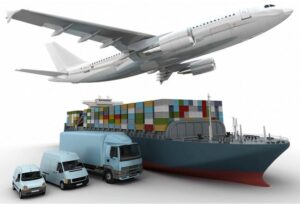cost of shipping container from china to uk
Navigating the complexities of international freight shipping can be daunting, especially when it comes to understanding the cost of shipping containers from China to the UK. This comprehensive guide unravels the key factors influencing shipping costs, empowers you to make informed decisions, and equips you with valuable strategies to optimize your budget.
Factors Influencing the Cost of Shipping Containers from China to the UK

Numerous elements contribute to the final cost of shipping your container. Here’s a breakdown of the most significant ones:
- Origin and Destination: Ports in China and the UK significantly impact costs. Shipping from major ports like Shanghai or Shenzhen is generally cheaper than smaller ports due to higher volumes and competition among freight forwarders. Similarly, delivery to major UK ports like London or Southampton might be more economical compared to less frequented ports.
- Shipment Weight and Volume: Gross weight (total weight of goods and packaging) and chargeable weight (the higher of the gross weight or the product of the cargo’s volume and a specific factor determined by your shipping line) play a crucial role. Heavier or bulkier shipments naturally incur higher freight costs.
- Shipping Method: Air freight is significantly faster but considerably more expensive than ocean freight. However, air freight might be preferable for time-sensitive cargo or smaller shipments where the cost difference is negligible.
- Container Size and Type: Standard dry containers (20ft and 40ft) are the most commonly used and generally the most cost-effective option. Specialized containers like refrigerated containers or open-top containers will incur additional charges.
- Additional Costs: Don’t forget to factor in customs duties, import VAT (Value Added Tax), inland transportation (costs from origin port to final destination within the UK), and terminal handling charges (fees associated with loading and unloading containers at ports).
- Fuel Surcharges: Be mindful of bunker adjustment factors (BAF), which are surcharges levied by shipping lines to offset fluctuations in fuel prices.
- Seasonality: Shipping costs often fluctuate based on peak seasons. Demand surges during holidays or specific times of the year can lead to increased prices.
Calculating the Weight and Volume of Your Shipment

Accurate measurement of your cargo’s weight and volume is essential for securing the most accurate quotes. Here’s a breakdown of how to approach this:
- Weigh your goods. Utilize a calibrated industrial scale to obtain the exact gross weight of your shipment.
- Calculate the volume. Multiply the length, width, and height of your cargo (in meters) to determine the cubic meter (CBM) volume. Don’t forget to factor in packaging materials.
- Identify the chargeable weight. Compare your gross weight with the product of your cargo’s volume multiplied by the specific weight conversion factor provided by your chosen shipping line. The higher of these two values will be your chargeable weight for billing purposes.
Determining the Shipping Method – Air Freight or Sea Freight
The choice between air freight and sea freight hinges on your priorities:
- Air Freight: Ideal for urgent deliveries or perishables. Advantages include speed (typically 3-7 days) and minimal handling. However, air freight is significantly more expensive than sea freight.
- Sea Freight: The most cost-effective option for non-time-sensitive cargo. Ocean freight offers economies of scale and is generally reliable, with transit times ranging from 30 to 45 days.
Pro Tip: If your cargo has some flexibility on delivery time and falls within a specific weight/volume range, consider sea-air freight, which combines ocean transportation for the bulk of the journey with a final leg via airfreight for expedited delivery.
Understanding Shipping Container Sizes and Types

The size and type of container you select significantly impact the cost:
- Standard Dry Containers: Available in 20ft (most common for smaller shipments) and 40ft (cost-effective for larger volumes). Ideal for dry goods, general cargo, and palletized shipments.
- High Cube Containers: Offer extra headroom compared to standard dry containers. They’re suitable for bulky, lightweight cargo that wouldn’t otherwise maximize space in a standard container.
- Refrigerated Containers (Reefers): Maintain specific temperatures for perishable goods throughout the journey. Expect to pay a premium for reefer containers due to the specialized equipment involved.
- Open-Top Containers: Feature a removable roof, facilitating the loading of oversized cargo that wouldn’t fit through standard container doors. Open tops typically incur additional costs.
- Flat Rack Containers: Lack walls and a roof, ideal for oversized or odd-shaped cargo that projects beyond the container’s footprint. Similar to open-tops, expect additional charges
Evaluating Additional Costs – Customs Duties, Taxes, and Insurance
While the core shipping costs might seem straightforward, additional expenses can add up quickly. Here’s a closer look at these factors:
- Customs Duties: These are government-imposed tariffs levied on imported goods. Duty rates vary depending on the product category and the UK’s trade agreements with China. Research the Harmonized System (HS) code for your specific goods to determine the applicable duty rate.
- Import VAT: Value Added Tax is an indirect tax levied on imported goods in the UK. The current standard VAT rate is 20%, but some goods might be subject to a reduced or zero rate. Ensure you understand the VAT implications for your shipment.
- Inland Transportation: Costs associated with moving your container from the port of arrival to your final destination within the UK. This can include truck transportation, rail freight, or a combination of both, depending on the distance and your chosen route.
- Terminal Handling Charges: Fees levied by port authorities for loading and unloading containers. These charges can vary depending on the port, container size, and cargo type. Factor these into your overall budget.
- Cargo Insurance: While not mandatory, protecting your shipment against potential damage or loss during transit is highly recommended. The cost of cargo insurance depends on the value of your goods, the shipping route, and the level of coverage desired.
Pro Tip: Consolidate your shipments whenever possible. Filling a container to capacity optimizes costs by maximizing the cargo you can ship for a single fixed container rate.
Comparing Shipping Rates from Different Freight Forwarders

Obtaining quotes from multiple reputable freight forwarders is crucial for securing the most competitive rate. Here’s how to approach this step effectively:
- Gather Quotes: Request quotes from several freight forwarders, providing details like shipment origin, destination, cargo weight/volume, container type, and desired incoterm (貿易条件 – bōeki jōken – a term defining responsibilities of buyer and seller during international trade).
- Compare Inclusions and Exclusions: Pay close attention to what each quote includes and excludes. Ensure you understand which costs (customs clearance, inland fees, etc.) are factored into the quoted price.
- Read the Fine Print: Review the terms and conditions of each quote carefully. Look for potential hidden fees or limitations on liability.
- Build Relationships: Developing a strong rapport with a reliable freight forwarder can benefit you in the long run. A good partner can provide valuable insights, negotiate rates on your behalf, and ensure smooth communication throughout the shipping process.
Pro Tip: Don’t solely focus on the lowest price. While cost is important, consider the freight forwarder’s reputation, experience on the China-UK route, and the level of customer service they provide.
Tips for Reducing Shipping Costs from China to the UK

Even with careful planning, there are strategies you can employ to potentially reduce your overall shipping costs:
cost of shipping container from china to uk
- Negotiate Rates: Don’t be afraid to negotiate with freight forwarders, especially if you have recurring shipments or large volumes.
- Plan in Advance: Booking your shipment well in advance, particularly during peak seasons, can help you secure better rates.
- Optimize Your Packaging: Utilize space-saving packaging techniques to maximize the amount of cargo you can fit into a single container.
- Consider Less Frequent Shipments: Consolidate smaller shipments into larger ones whenever possible to reduce the overall number of container bookings required.
- Explore Alternative Ports: Research the feasibility of using smaller ports that might offer lower congestion and potentially more competitive pricing.
Remember: While cost is a major consideration, prioritize reliable and efficient shipping partners over cutting corners that could lead to delays or damage to your cargo.
Common Challenges and Solutions in Shipping Containers from China to UK
- Documentation Errors: Ensure all necessary paperwork, including commercial invoices, packing lists, and bills of lading, are accurate and complete to avoid delays at customs.
- Unexpected Delays: Be prepared for potential delays due to factors like port congestion, customs inspections, or bad weather. Building buffer time into your delivery schedule can help mitigate the impact of these unforeseen circumstances.
- Communication Issues: Clear and consistent communication with your freight forwarder is paramount. Maintain open communication channels to stay updated on the status of your shipment and address any concerns promptly.
- Currency Fluctuations: Currency fluctuations can impact your bottom line. Consider locking in exchange rates when booking your shipment to mitigate the impact of market volatility.
By understanding the factors influencing shipping costs, meticulously calculating your shipment’s weight and volume, selecting the appropriate shipping method and container type, and factoring in additional expenses, you can navigate the complexities and cost of shipping container from China to UK with greater confidence. By




